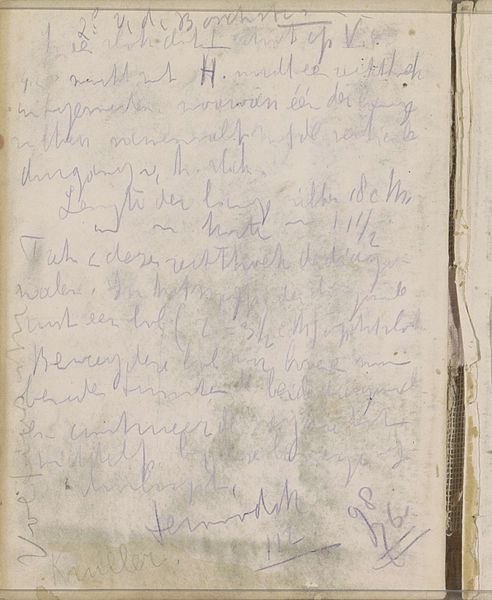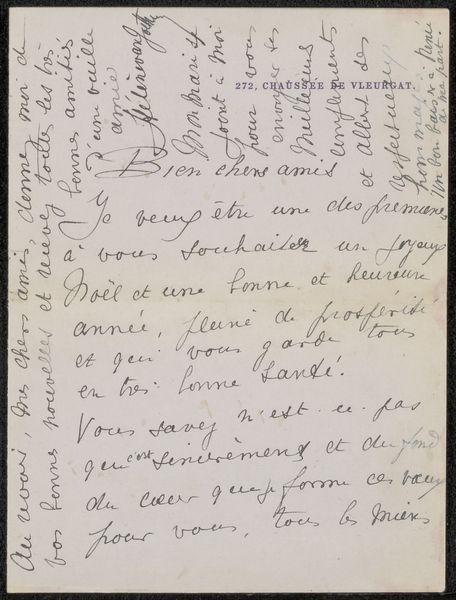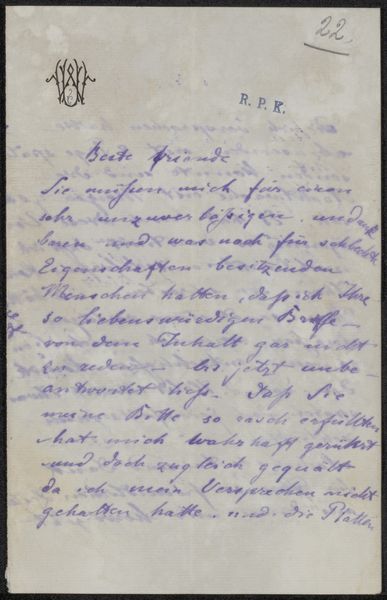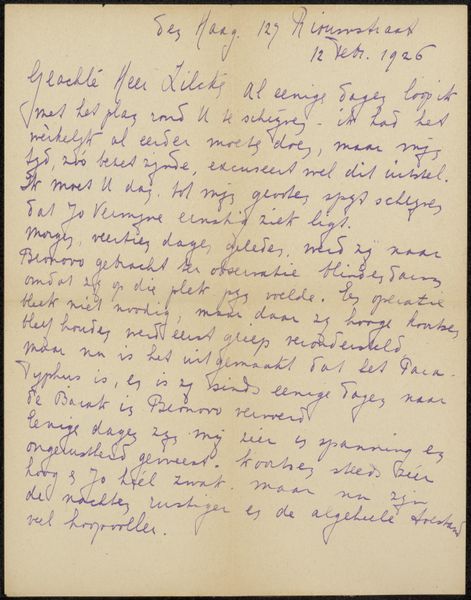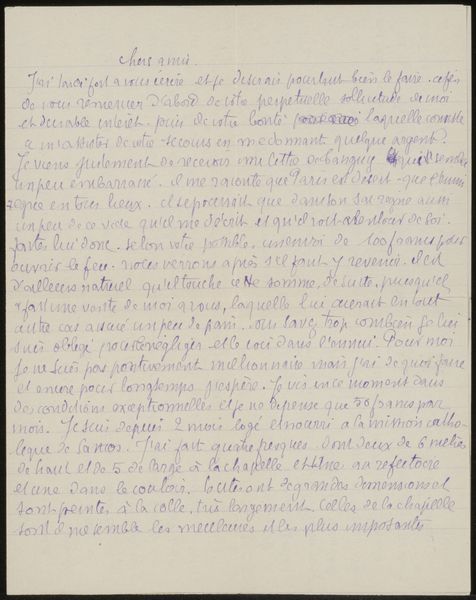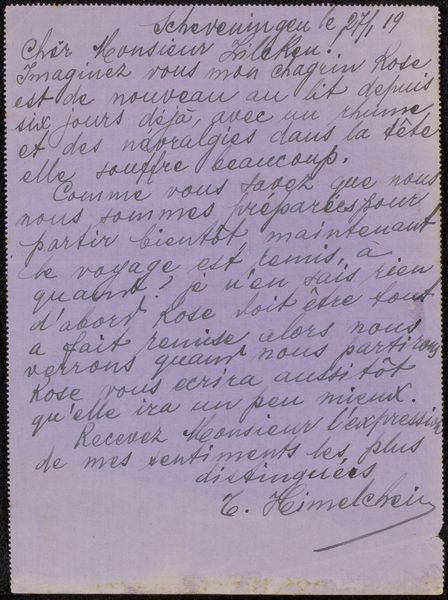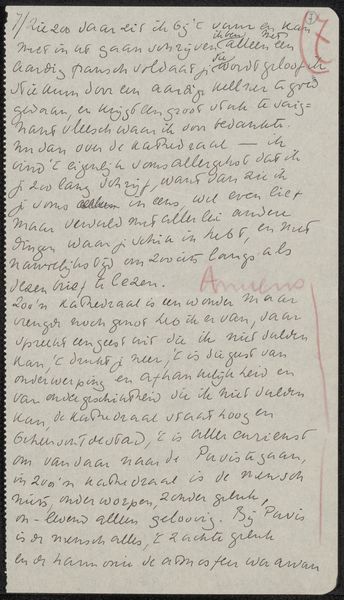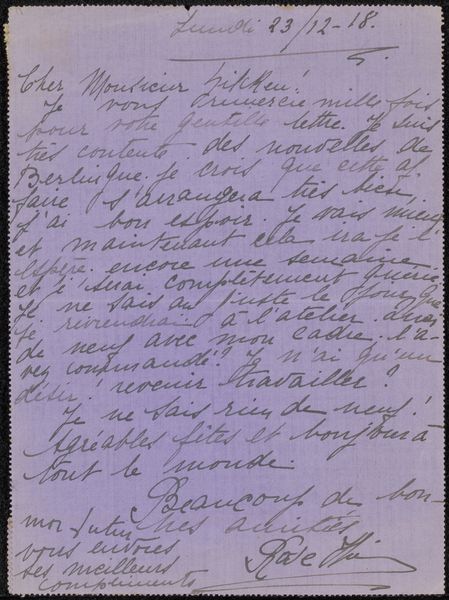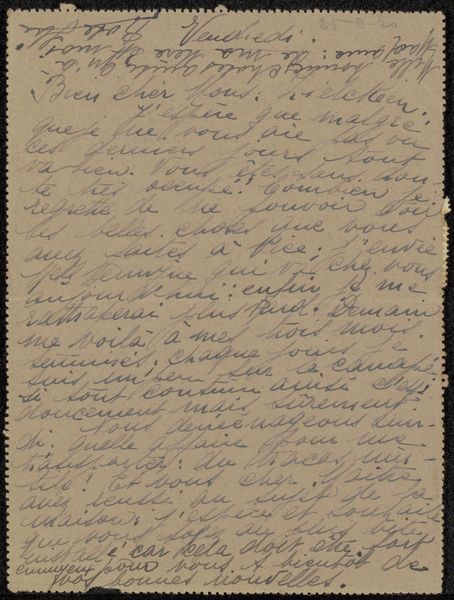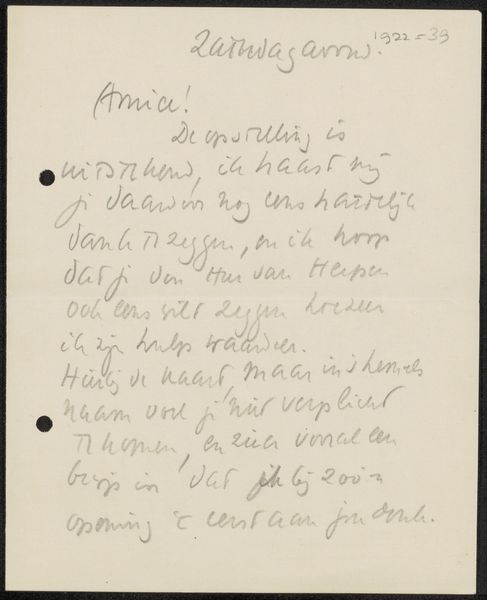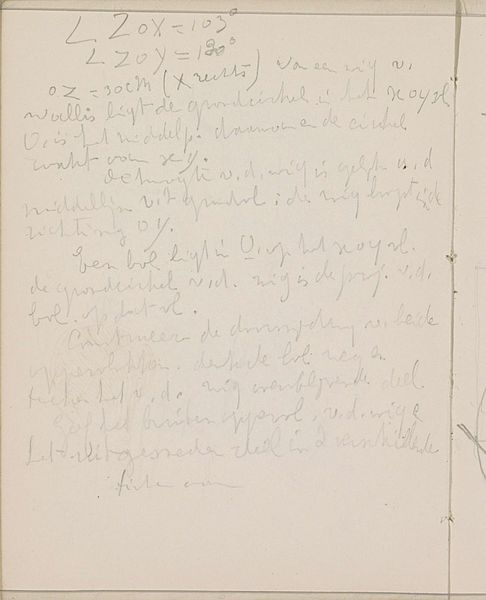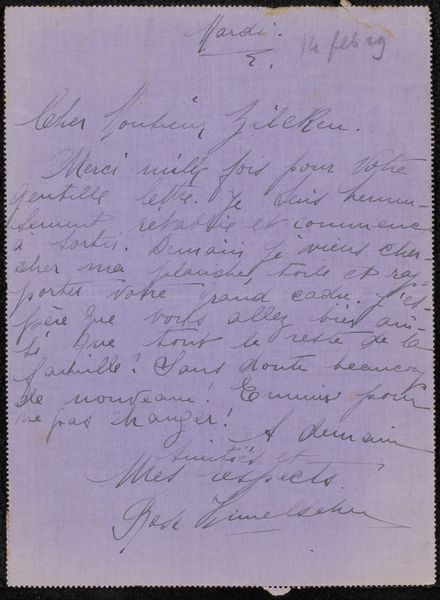
drawing, paper, pencil
#
drawing
#
paper
#
personal sketchbook
#
pencil
#
france
#
post-impressionism
Dimensions: 225 × 74 mm
Copyright: Public Domain
Curator: We're looking at "Fragment of Long Inscription," a pencil drawing on paper by Paul Gauguin, created around 1895, currently held at The Art Institute of Chicago. What's your initial take? Editor: My first impression is one of faded intimacy, a hushed whisper on paper. The handwriting is difficult to decipher, and the sketchy figures at the bottom seem like ghosts haunting the script. Curator: Indeed. The script provides an entry point. Even fragmentary, the text and imagery offer clues to Gauguin's state of mind during this period, revealing insights into the personal symbolism that informed his more finished works. Do you feel you have to know french to find that state of mind ? Editor: Definitely. But it also feels fraught, weighed down. I can't help but view his Tahitian period through a postcolonial lens, one that acknowledges his exoticization of indigenous peoples and cultures. The text seems like another layer to this context, since the viewer would probably require translations. It deepens my discomfort as a viewer, because while there are aesthetic values, the politics underneath are harder to navigate. Curator: The symbolism also carries a weight of its own, separate from, and in complement to, contemporary political analysis. We know that Gauguin deeply identified with the "savage" or "primitive," and often uses visual short hand that relies on symbolic interpretation and draws on cross cultural mythologies and narratives to represent it. What does the text actually say though ? Editor: I only gather parts of it, but it references "wild savages" who don't understand him, something is "imposed," that is making it hard to consolidate or feel comforted. Then what sounds like an instruction about being 'proud, crowned, and multiplied'. It hints at the profound disjunctions in Gauguin's project of self-exile. It suggests that no matter how deeply he travels he will encounter a divide within himself. I find his inscription of this painful interior process on this work powerful and quite sad. Curator: Precisely. That search for the uncorrupted "primitive" was, of course, a construction itself. But, looking closely, can we see elements beyond cultural dissonance? Can the script, that faded line on paper itself point to an elemental search? Editor: Perhaps, and perhaps there's a romanticism embedded within this sentiment that makes me still deeply uneasy. But its worth exploring the artist as both cultural icon, but also someone deeply lost in their own artistic mission, without the right tools. Thanks for your insights into these elemental gestures of artistic process.
Comments
No comments
Be the first to comment and join the conversation on the ultimate creative platform.


